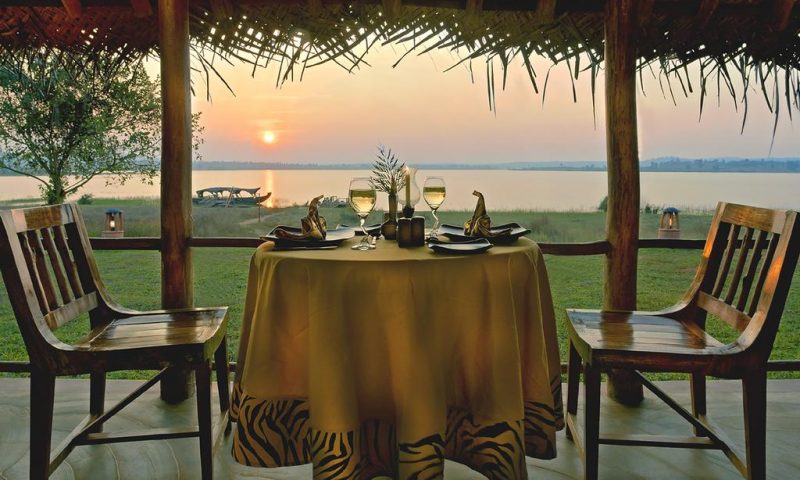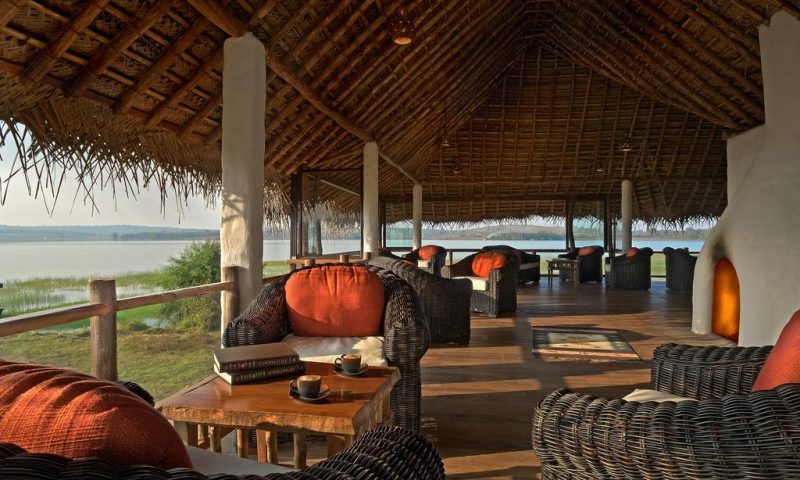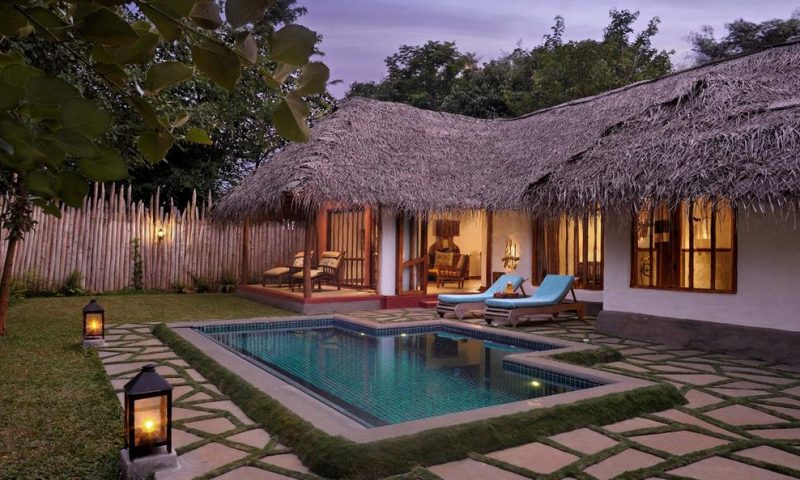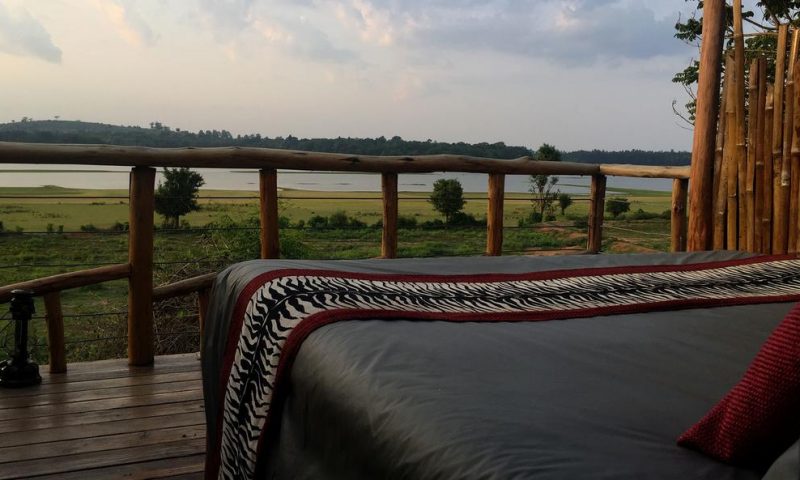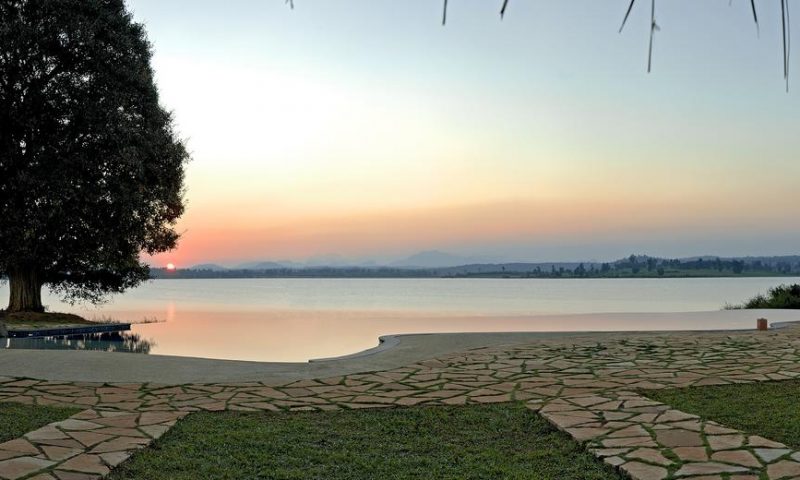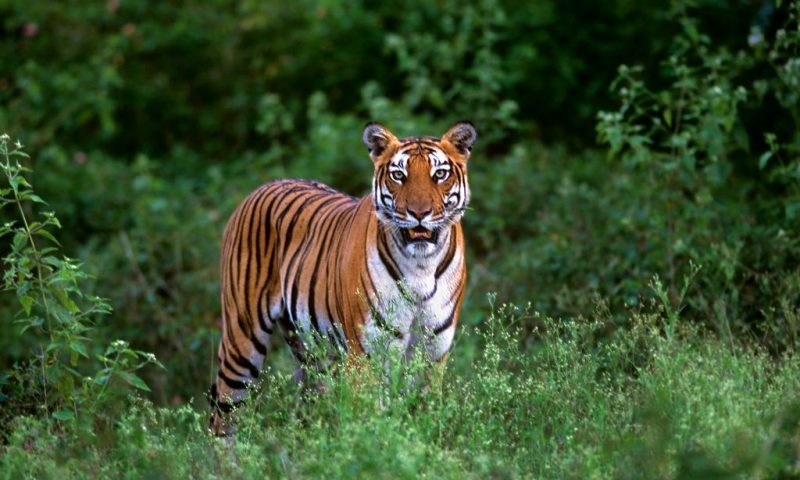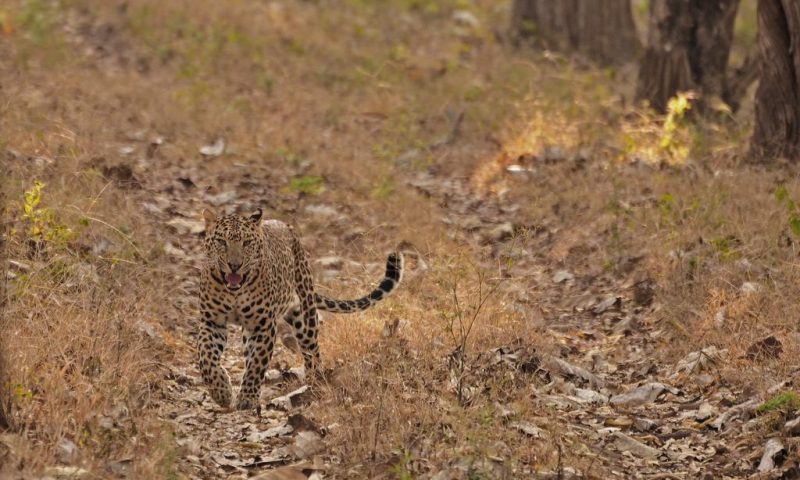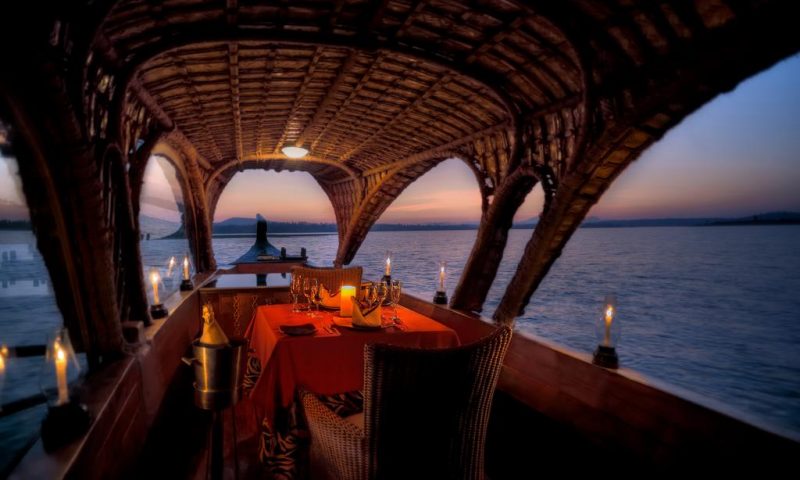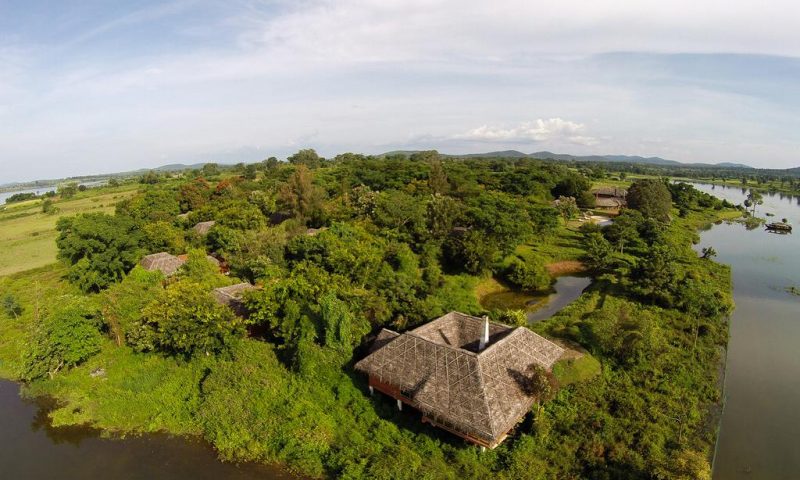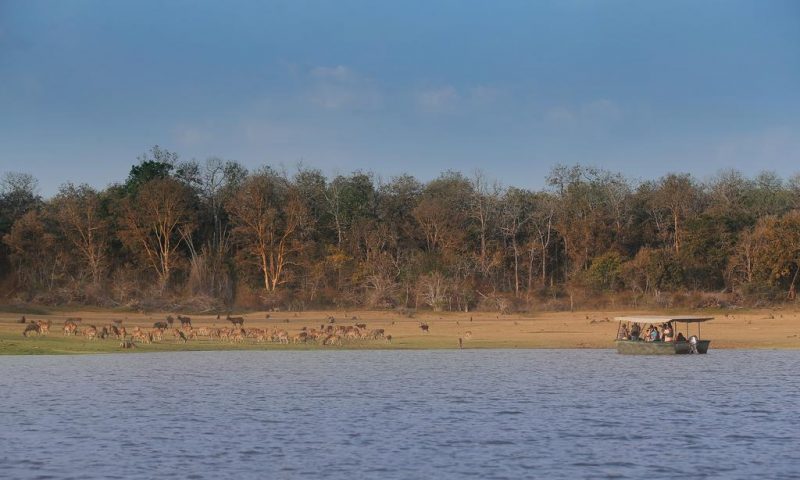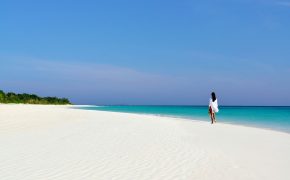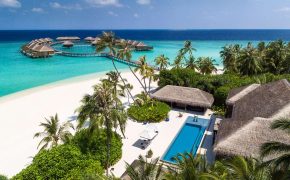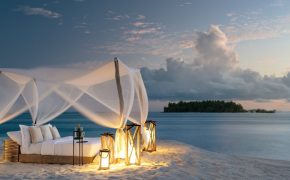Evolve Back’s Spirit of the land philosophy finds its most intimate expression at Kabini, where you are drawn into the vibrant social tapestry of the local Kadu Kuruba tribe.
While you discover a vernacular dimension to luxury that’s truly liberating, the resort gives you a wildlife experience like no other. Inspired in design by the Hadis or tribal villages, this picturesque resort of sweeping panoramic vistas, is bordered on two sides by the Kabini River.
THE HISTORY
Nagarhole was ruled by the Lingayat kings of Kodagu and their feudatories until the British colonial administration established hegemony in the 1850s, soon after the defeat of Tipu Sultan of Mysore. The presence of derelict irrigation tanks suggests that there were agricultural enclaves within the forested landscape.
While the Lingayat kings maintained nominal control, the forests were considered common property and swidden agriculture (slash and burn technique) and collection of forest produce by the tribes residing within the forested landscape was widespread.
The colonial administration established the Forest Department in 1860 with a mandate to restrict forest burning, control swidden agriculture, prevent agricultural encroachments, carry out sustainable harvest of timber and to raise teak plantations. From the 1890s, the forests were gradually demarcated and notified as government owned reserved forests.
After Indian independence, the Govt. of India laid great emphasis on the production of food and the harvesting of timber, which led to the importation and settlement of tribal and non- tribal groups into the hadlus or swampy clearings, to provide cheap labour for forestry operations and for the cultivation of rice.
In 1955, a 285 sq km area was gazetted as the Nagarhole Game Sanctuary. The same was extended in 1974 with some reserved forests from the Mysore district being added to bring the total area to the present 644 sq km. This was also accorded the status of a National Park in 1974.
HUTS OVERVIEW
We couldn’t make Kabini more beautiful, so we thought we’d simply make it more exquisite. We began with the understanding that the most luxurious things in the world are peace, tranquility and harmony, and that whatever we do should only enhance these pillars of our philosophy.
The result is a resort architecture that has a tribal Kadu kuruba leitmotif, where each of the guest huts bespeaks a happy marriage of traditional craft and modern luxury.
From the outside, the dwellings subtly incorporate the colours and textures of the landscape in every detail; while within, the sumptuous interiors reflect a warm vernacular sensitivity. From the ethnic furniture to the tribal patterned furnishings, to the little touches like the ‘bottle gourd’ lamp shades, the sum of the parts is a harmonious whole.
POOL RESERVE
There is luxury and then there is the Pool Reserve. This charming hut has large living and dining spaces, a lavish bedroom, an indulgent bathroom, a personal ozonized and temperature controlled swimming pool.
POOL HUT
Perhaps the most opulent ode to privacy, our Pool Huts come with a large living and dining area, a spacious bedroom, a unique bathroom with a courtyard, and…yes…your own personal swimming arena (non-heated).
JACUZZI HUT
Our Jacuzzi Huts offer you sumptuously appointed living spaces and deliciously comfortable bedrooms, but chances are you’ll mostly be holding court in your very own personal outdoor Jacuzzi (non-heated).
DINING OVERVIEW
The two restaurants at Kabini are dedicated to the gourmet in you. They offer cuisines that are as varied as they are imaginative and memorable. Together, they are certain to fulfill every culinary aspiration and satisfy the most demanding palate.
HONEY COMB
Our fine dining restaurant, Honey Comb, named after the honey gathering Jenu (Honey) Kuruba tribe, lays out a platter of the cream of international and regional cuisine. Served in a location so bewitching, you’ll possibly be an hour early for dinner, just to sit back and watch the sun setting over the Kabini river. In this situation, a case of Nature providing the appetizer for Man’s culinary creations.
THE KURUBA GRILL
A speciality restaurant, the Kuruba Grill is dedicated to Kebabs and Grills and serves up platters of their best specimens in a serene setting overlooking the River Kabini.
BY THE KABINI
Give in to the serenity of the Kabini at night as it softly plays its melodies around you. Let it define your mood for the evening as you enjoy each other’s presence in a warm and intimate dining experience by the waters of this soulful river.
CANDLE LIGHT CRUISE
A one of a kind boat-dining experience designed to literally set your love and longings afloat. Relish each other’s company under the gentle, warm, glow of candle lights while silently floating on the waters of the Kabini. Savor exquisite food and wine from a choice menu prepared onboard just for the two of you.
FACILITIES OVERVIEW
Evolve Back Kuruba Safari Lodge, Kabini comes with all the facilities you’d expect in a world class luxury resort … and then some more. A scenic Reading Lounge, a traditional Ayurveda Village and the timeless Infinity Pool are designed to relax and rejuvenate your body, mind and soul. The other facilities include a board room and a well stocked bar.
INFINITY POOL
For a relaxed course on understanding timelessness, spend a few hours in our exclusive Infinity Pool for adults located at the lake’s edge, the perfect oasis of calm. Whether you’re paying obeisance in the pool or soaking in the atmosphere at the enchanting Pool Lounge, the azure waters and the russet skies of a Kabini sunset spectacle often combine to transport you to a world where time has no meaning.
READING LOUNGE
When you step out, we’ll help you forget the world you’ve come from, with a scenic Reading Lounge where you can put up your feet, and lose yourself in any of our coffee table books on wildlife, whilst being serenaded by birdsong and the mysterious sounds of the forest you’re reading about.
The only interruption in this blissful exercise that you’ll welcome is the steaming cups of cappuccino brewed from Sidapur, the signature house brand.
AYURVEDA
Experience rebirth at the Vaidyasala, where India’s ancient healing secrets are put to work in ironing out the kinks in your system. Whether it be a simple rejuvenation massage or therapeutic treatments, our Doctors and Therapists will ensure you return in better shape.
FAMILY POOL
Take the plunge into our Family Pool that beckons you with its clear azure waters. The pool is ideal to laze around in with your family, as it also has special child-safe zones so you can take a lap or two without worrying about your toddler.
EXPERIENCES OVERVIEW
At Evolve Back Kuruba Safari Lodge, Kabini, we help you get closer to the spirit of the land by offering a platter full of activities that let you choose your activity level and the degree of separation from the wild.
So, whether you’d prefer being a spectator or a participant is left to you. All the activities here have been designed around the uniqueness of the location and the local culture, and afford you the chance to exercise both your mind and body.
BOAT SAFARI
On the Boat Safari, you will be taken upstream from the resort on the Kabini River to where the river itself separates the Nagarhole National Park from the Bandipur National Park.
Today, on the banks of the Kabini, one can witness the largest congregation of Asiatic elephants, peacefully feeding and getting on with their lives. In addition to diverse wildlife sighted on the extensive river banks, the boat safari offers an opportunity to observe the Marsh Crocodile, Smooth-coated Otter and myriad water birds
VEHICLE SAFARI
The Nagarhole ecosystem supports the highest density of herbivores anywhere in Asia with around 108 animals per sq km. In addition to large herbivores such as the Chital, Sambar, Gaur, Asian Elephant and more, Nagarhole also boasts a large number of predators including the Tiger, Leopard and Wild dog.
A highlight of the Park is the largest congregation of Asian Elephants in the world, which occur during the summer months. The visitor can also look forward to bird watching, what with over 300 species of birds recorded in the region
NATURE WALK
A guided Nature Walk is one of the best ways to explore the treasures of nature. A Naturalist would unravel the beauty of birds, insects, trees and wild flowers. The walk would take you along the banks of the Kabini river and then through the scrub and fields along the village roads
NIGHT TRAILS
As night descends upon the Kabini landscape a whole world of nocturnal life emerges. Those of you not lured by after-dinner television can explore nature around the resort at night, armed only with flashlights and a spirit of adventure.
Our naturalists will skillfully escort you around the areas just outside the resort and by the Kabini’s waterline where you will encounter the fascinating nocturnal world of beetles, spiders, owls, moths, lizards and even plants as you go about this unusual night expedition
CORACLE RIDE
Guests will be taken on a traditional round shaped boat called a coracle. The design of the boat is unique to the rivers of southern India and surprisingly to the rivers of Ireland! The coracle will drift slowly down the Kabini, hugging the shoreline. The purpose of this activity is to allow the visitor to experience the river by bringing him in direct contact with it.
EVENING ACTIVITIES
Every alternate evening, a troupe of Kuruba tribal dancers performs their traditional dance around a campfire, to the accompaniment of two wooden drums and one wind instrument.
This dance is traditionally performed during festivals & times of strife and is an invitation to their gods to join them and bless the occasion. A Documentary on wildlife is screened every other evening in the Check-in Lounge to open to our guests the mysteries of nature.
FAUNA
The Nagarhole ecosystem supports the highest density of herbivores anywhere in Asia. Studies carried out in Nagarhole show that the estimated mean number of large herbivores in Nagarhole is 108 animals per sq km.
Large herbivores are defined as ungulates and primates weighing more than 5kg and in Nagarhole these comprise of – Muntjak, Chital, Sambar, Four-horned antelope, Gaur, Wild pig, Asian Elephant, Common Langur and the Bonnet Macaque.
This translates into a biomass of 14746 kgs per sq km. This is comparable to the Masai Mara in Africa, which has a biomass of 19200 kgs. Of these herbivores, the Chital, Sambar, Gaur, Wild pig, Muntjak and Common Langur are preyed upon by the Tiger, Leopard and Wild Dog.
These herbivores are classified as principle prey species and occur at a estimated mean density of 91 animals per sq km. The prey species can be further divided on the basis of body weight into small (Langur, young
Chital and young pig ), medium (yearling and adult Chital, adult pig, yearling and young Sambar and young Gaur), and large (adult Sambar and adult Gaur) and studies show that Tigers preferentially selected large prey, Leopard medium and small prey and the Wild dog medium prey.
Because the availability of prey in the appropriate size class is not a limiting resource in Nagarhole, selective predation has facilitated large carnivore co-existence in the park.
The principal reasons for large carnivore coexistence in Nagarhole as opposed to the African savanna are ecological factors such as adequate availability of appropriate sized prey, dense cover and tree density which is absent in the African savanna and the fact that behavioral factors such as habitat specificity, choice of hunting sites or inter-specific dominance play a relatively minor role in Nagarhole.
FLORA
The vegetation in Nagarhole reflects the distribution of rainfall over the park. The eastern parts of the park receive less rainfall with a gradual increase to the middle and western parts of the park.
The two broad forest types that dominate the park are the moist-deciduous, where the annual rainfall exceeds 1000mm and dry-deciduous where the rainfall is lower. Substantial areas were clear felled and monocultures of teak were raised. Where these plantations failed, secondary forests have taken over.
There are also various microhabitat types such as hadlus, which are shallow clayey valley bottoms that contain swamp savannas and short grass clearings or veiwlines created to facilitate game viewing for the tourists.
A dam was built across the Kabini, creating a huge lake with Giant Bamboo dominating the river banks. During the dry season, water is let out for irrigation and the lake dries out leaving only the main river visible.
The resulting open plain supports an abundance of fresh grass more reminiscent of African savanna than tropical India. This unique microhabitat has proved to be a boon for the park, providing fresh grass when the rest of the park is drying out.
NAGARHOLE NATIONAL PARK
Nagarhole National Park of Karnataka serves as home to some of the most endangered wildlife species. The term Nagarhole is a combination of two Kannada terms, ‘Nagara’ meaning ‘Cobra’ and ‘Hole’ meaning ‘River’. This National Park has been named after the river ‘Nagarhole’ which snakes through its rich tropical forests.
Set up in 1955 in Coorg, in an area of 285 sq km, the park was accorded the status of a National Park and extended in 1974, with some reserved forests from the Mysore district being added, to bring the total area to the present 644 sq km. In 2000, the park was brought under ‘Project Tiger’.
The Kabini dam submerged large tracts of forest creating a huge lake, parts of which are within the national park. During the dry season, the lake dries out, leaving only the main river visible.
The resulting open plain creates an abundance of fresh grass, more reminiscent of African savanna than tropical India. This unique microhabitat has proved to be a boon for the park, providing fresh grass when the rest of the park is drying out.
KABINI RIVER
The river Kabini originates in the Wayanad district of Kerala, flows eastward to join the river Cauvery, which empties into the Bay of Bengal. This is the largest river in the Nagarhole National Park and was dammed in 1974 for an irrigation project.
This becomes the life-giving source for the park during the summer months, attracting the largest concentration of Asiatic Elephants and other herbivores. The river separates Bandipur and Nagarhole National Parks.
